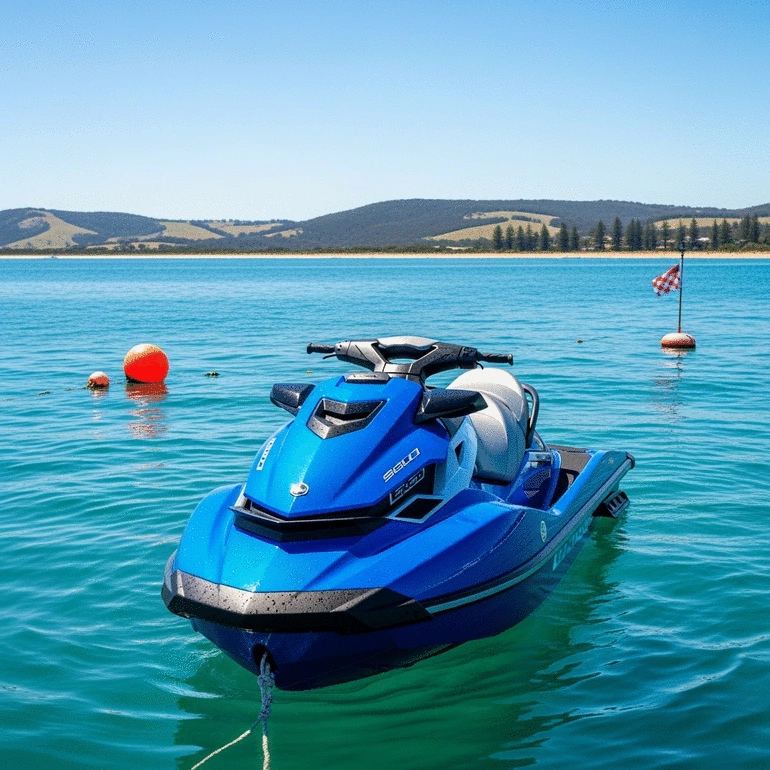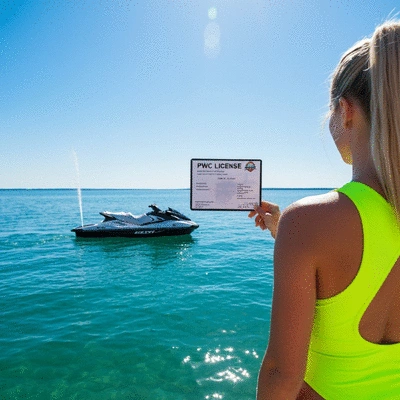
The thrill of jet skiing is only matched by the responsibility of riding safely and legally. Understanding the regulations surrounding personal watercraft (PWC) not only enhances your adventure but also ensures a safer experience for everyone on the water. Here’s what you need to know!
A side-by-side overview of key licensing and operational requirements for Personal Watercraft (PWC) across Australian states.
As an avid jetski rider and the founder of JetSki Hire HQ AU, I can’t stress enough the importance of understanding safety regulations while enjoying our beautiful waterways. Complying with personal watercraft (PWC) laws not only ensures your safety but also enhances the overall experience for everyone on the water! So, let’s dive into why these regulations are crucial.
Complying with PWC laws is essential for several reasons. First, these regulations help protect the natural environment and aquatic wildlife we cherish. Second, they significantly reduce the risk of accidents and injuries while riding. Lastly, following these laws fosters a sense of responsibility among riders, contributing to a safer community. For more tips on safe operation, consider visiting our guide on Jet Ski Safety Tips.
As a jetski operator, it’s our duty to set a positive example and promote safe riding practices. Understanding these laws can enhance your adventure and help you enjoy every moment on the water!
Before you hit the waves, it’s essential to familiarize yourself with the key terms related to jetski regulations. Knowing the jargon can make navigating the laws much easier. Here are some important terms to keep in mind:
Understanding this terminology can help you communicate effectively with rental staff and fellow riders, ensuring a smoother experience overall.
The Australian Maritime Safety Authority (AMSA) plays a vital role in overseeing jetski regulations across the country. They establish essential safety standards and guidelines that all riders must follow. AMSA aims to ensure that our waterways remain safe and enjoyable for everyone!
Staying informed about AMSA’s guidelines will not only keep you compliant but also enhance your understanding of safe riding practices. After all, there’s nothing better than enjoying a thrilling jetski adventure while prioritizing safety!
We want to hear from you! How familiar are you with jet ski safety regulations in your state? Share your thoughts below:
As a passionate water sports enthusiast, I know just how crucial it is to understand the specific jet ski safety regulations that vary by state in Australia. Whether you're planning a thrilling adventure on the Gold Coast or a serene ride in Tasmania, being aware of the local laws will keep your experience not only enjoyable but also compliant and safe. Let’s dive into the regulations you need to know!
The first step towards a fantastic jet skiing experience is ensuring you have the appropriate license. Each state in Australia has its own licensing requirements, which are designed to ensure that all operators are equipped with the necessary knowledge and skills. Here’s a quick breakdown:
Understanding these requirements will empower you to navigate the waters confidently and legally. Don’t hesitate to ask the rental staff at JetSki Hire HQ AU for guidance if you're unsure about your licensing needs.

It's important to note that age restrictions and competency standards vary across states. For instance, in New South Wales, riders must be at least 12 years old to operate a jet ski, while Queensland requires riders to be at least 16. Additionally, some states may require completion of a safety course to ensure you’re equipped for a safe ride!
In Western Australia, the Recreational Skippers Ticket (RST) is a specific license needed for operating any recreational vessel, including jet skis. The RST focuses on safety at sea and navigation rules, helping to ensure that all riders understand the responsibilities that come with enjoying our beautiful waterways. Completing this ticket can truly enhance your confidence on the water!
As you explore jet skiing in different regions, don’t forget that regulations can change. It’s essential to check with local authorities or services like JetSki Hire HQ AU for the most current information. Remember, being well-informed about licensing is a key part of responsible riding!
Once you have your license sorted, it’s time to familiarize yourself with the operational rules and safety guidelines that vary by state. These rules are crucial for keeping you and others safe while out on the water.
These operational rules are designed to minimize risks and ensure a smooth sailing experience. Always stay updated and keep safety at the forefront of your adventure!
Speed limits can vary significantly from one location to another, with popular tourist areas often enforcing stricter regulations. Familiarizing yourself with these limits will not only help you avoid fines but also enhance your enjoyment as you navigate different waterways.
Like any vehicle, it’s illegal to operate a jet ski while intoxicated. Australia has strict laws regarding blood alcohol limits for watercraft operators, and penalties can be severe. Always plan a safe ride—if you’re drinking, make sure to have a designated operator or enjoy the view from the shore instead!
In South Australia, you may encounter seasonal bans or restrictions aimed at protecting wildlife and the natural environment. These regulations are vital for preserving the stunning ecosystems that make our waters so special. Always check the local guidelines before your ride!
Having the right safety equipment can mean the difference between a fun day on the water and a dangerous situation. Here’s a list of essential gear every jet ski operator should have:
Preparing with the right safety equipment not only aligns with regulations but also enhances your peace of mind while jet skiing. Remember, safety first! For information on Jet Ski Rental Insurance in Australia, which can provide an additional layer of security, check out our detailed guide.

Lifejackets must be certified and appropriate for the size of the rider. Communication devices are vital for emergencies, ensuring you can contact help if needed. Always double-check that your equipment is in good condition!
Alongside lifejackets, having PFDs for additional passengers and rescue equipment like throw ropes is recommended. These items can aid in emergencies and improve overall safety on the water.
I recommend regularly reviewing your safety equipment to ensure everything is up to date and compliant with local laws. Regular checks can prevent mishaps during your adventures!
If you plan to tow skiers or tubes, you’ll need to be familiar with the towing regulations that differ from state to state. Here’s what you should keep in mind:
These guidelines help keep you and your friends safe while enjoying thrilling water sports, so always adhere to them!
Legal limits can dictate how many people can be towed and where you can tow. Always double-check these regulations before your adventure to avoid fines!
Being responsible while towing means maintaining a safe distance from other vessels and swimmers. It’s crucial to communicate with your spotter and have a clear plan before you take off!
Engaging in towable sports can be exhilarating, but understanding the regulations ensures everyone has a safe time. Always seek out local best practices to enhance your experience!
Here is a quick recap of the important points discussed in the article:
We're your premier online resource for exhilarating jetski hire in Australia. Dive into expert tips, safety advice, and comprehensive destination guides to make every ride unforgettable. Let's make waves together!
